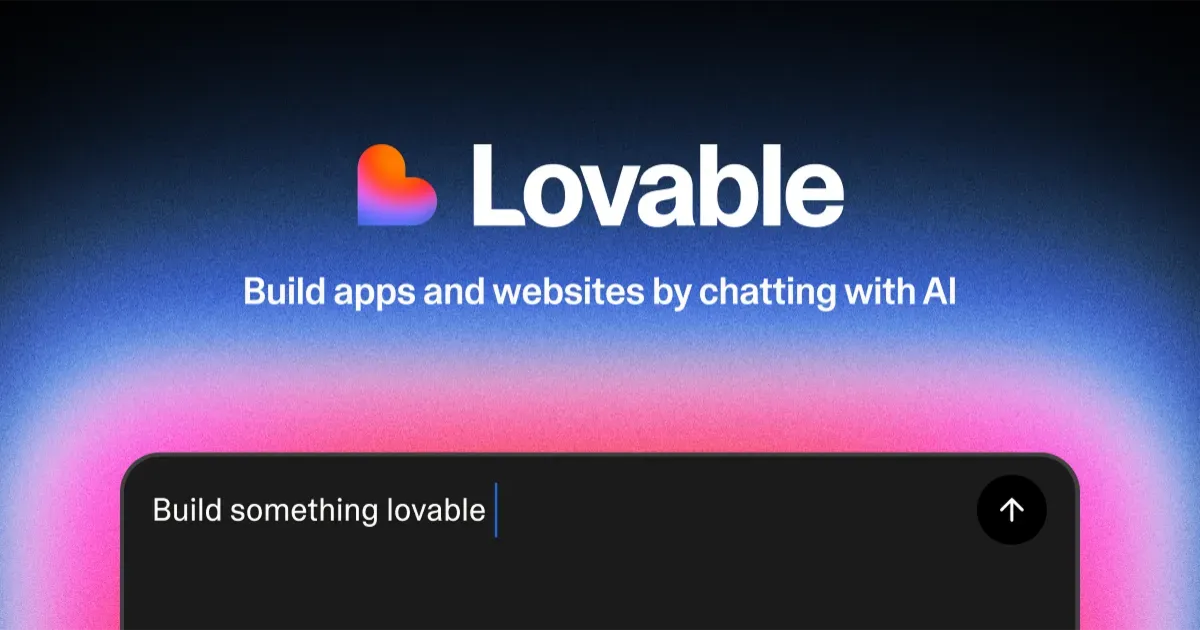Lovable AI for Founders: Fast UI Ideation, Real Limits

Lovable promises to help founders and teams go from an idea to a working interface within minutes. It calls itself a design automation tool powered by AI bridging the gap between brainstorming and early product design.
The pitch is simple: describe your product idea in plain English and get back an interface concept, user journey, and messaging structure. For early-stage founders who can’t afford a designer or product strategist, this sounds almost too good to be true. In practice, it’s both impressive and limited.
What Lovable Does Well
Lovable isn’t trying to replace design software like Figma or Sketch. Its real strength lies in speed and clarity. It helps people without design experience visualize what a product could look like before spending money on development or UI design.
The workflow is straightforward:
- You describe your app or product idea.
- Lovable generates UI screens, user flows, and even text content.
- You refine or adjust prompts to explore different angles.
- You can export the results or rebuild them in your own tools.
This allows non-design founders to finally express their vision clearly to designers, investors, or developers.

Lovable Design Automation
Turn your product ideas into visual UI concepts in minutes. Scalevise helps you leverage Lovable for fast ideation, clear storytelling, and early-stage validation—before your first Figma file.
- ✓ Rapid UI concepts for non-design founders
- ✓ Ideal for early product validation & pitches
- ✓ Strategic implementation by Scalevise
Speed and Structure
Where Lovable really shines is in early-phase thinking. It turns vague ideas into structured concepts fast. For founders still validating a business model or user flow, it’s a useful tool for prototyping narratives and functionality without touching design tools.
Accessibility for Non-Designers
Lovable makes early design accessible. People who’ve never opened Figma can now produce realistic concepts. It’s particularly useful in startup incubators or pitch workshops, where speed matters more than polish.
Built-In Product Thinking
Unlike many visual tools, Lovable includes product context. It prompts users to define audiences, pain points, and value propositions. This makes it more than just an AI drawing board it’s a structured thinking environment.
Where Lovable Falls Short
Lovable’s promise of “AI design automation” is real, but it doesn’t hold up for production work.
It’s Not Developer-Ready
The generated designs look clean but aren’t production-grade. There’s no responsive logic, spacing system, or component structure. Developers can’t take these mockups and build directly from them without heavy redesign.
Limited Branding and System Control
While you can select color styles or tones, Lovable doesn’t support full design systems. If you want pixel precision or brand consistency, you’ll still need to move to Figma or another tool. It’s great for the ideation phase, but weak for brand execution.
No Design Handoff
There’s no direct way to translate the outputs into developer-friendly assets. It’s useful for conversations and early planning but not for implementation.
Subscription Value Drops Fast
The free tier is limited, and the paid versions start at $29/month for individuals and $99/month for teams. For founders who only use it occasionally, that cost adds up quickly. It only becomes worthwhile if you’re constantly iterating ideas or working with clients who need visual storytelling.
Pricing Overview
| Plan | Monthly Price (USD) | Description |
|---|---|---|
| Free | $0 | Limited generations, single project |
| Pro | $29 | Unlimited concepts, export options |
| Team | $99 | Collaboration features, shared workspaces |
For early-phase experimentation, the Pro plan is fair. The Team plan makes sense if multiple stakeholders need to iterate together.
When Lovable Is Worth Using
Lovable is worth considering if you’re in the idea-to-concept phase of a product or startup. It’s also a great fit if you need to pitch concepts to investors or clients and don’t have time to wait for designers.
Use it if:
- You’re testing product-market fit and need quick visuals
- You want to explore multiple product directions fast
- You’re running a startup accelerator or design sprint
- You need AI-generated UI ideas to communicate intent
It’s also ideal for agencies that want to accelerate discovery workshops or validate product concepts visually before production.
When Lovable Becomes a Waste of Time
Lovable doesn’t make sense if you’re building something that’s already past ideation. Once real UX decisions, branding, or development come into play, you’ll outgrow it quickly.
Avoid it if:
- You already have a design team
- You’re preparing a production-ready prototype
- You care about spacing, accessibility, and component logic
- You need collaboration with developers in real time
In short: it’s a thinking tool, not a building tool.
Comparison with Other Tools
| Tool | Core Focus | Ideal For |
|---|---|---|
| Lovable | AI-driven ideation | Founders, marketers, early concepts |
| Figma | Professional design | Designers, product teams |
| Uizard | AI to wireframes | Rapid experimentation |
| Typedream | No-code web creation | MVP websites |
| Relume | Web design automation | Agencies, landing pages |
Lovable belongs to the “ideation layer” a space that’s becoming increasingly important as startups look for speed over structure. It sits nicely between brainstorming in Notion and designing in Figma.
Verdict
Lovable delivers real value to people who need to turn abstract ideas into something visual, fast. It lowers the barrier between concept and prototype, especially for non-design founders and startup teams.
But if you’re expecting production-ready quality or deep design control, it’s not the right tool. It’s a catalyst, not a replacement for real design or engineering.
Use it for early exploration. Discard it when you move to real development. That’s where Lovable shines: helping you think faster, not build faster.
If you’re exploring how tools like Lovable, Figma, or Make.com can fit into your automation or product stack, contact Scalevise for a tailored workflow architecture that scales with your product vision.
